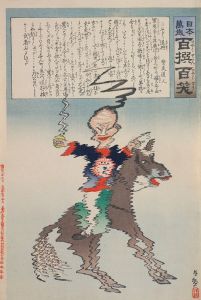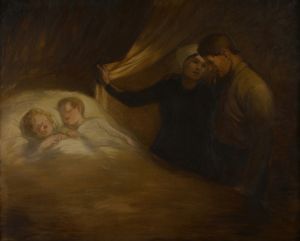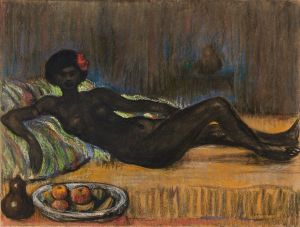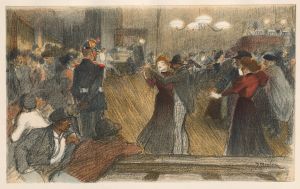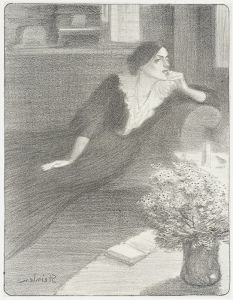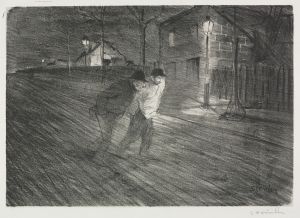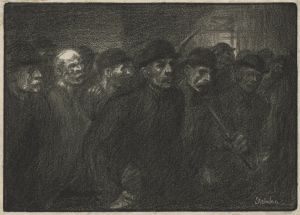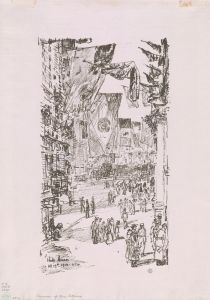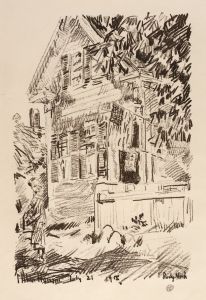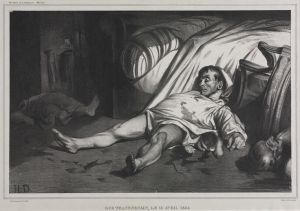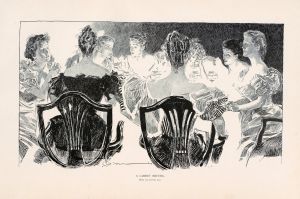
Journée des régions libérées, que votre aide à nos frères malheu
A hand-painted replica of Théophile Alexandre Steinlen’s masterpiece Journée des régions libérées, que votre aide à nos frères malheu, meticulously crafted by professional artists to capture the true essence of the original. Each piece is created with museum-quality canvas and rare mineral pigments, carefully painted by experienced artists with delicate brushstrokes and rich, layered colors to perfectly recreate the texture of the original artwork. Unlike machine-printed reproductions, this hand-painted version brings the painting to life, infused with the artist’s emotions and skill in every stroke. Whether for personal collection or home decoration, it instantly elevates the artistic atmosphere of any space.
Théophile Alexandre Steinlen, a Swiss-born French Art Nouveau painter and printmaker, is renowned for his socially conscious works that often depicted the lives of the working class and the marginalized in society. One of his notable works is the poster "Journée des régions libérées, que votre aide à nos frères malheureux," which translates to "Day of the Liberated Regions, Help Our Unfortunate Brothers." This piece was created in the aftermath of World War I, a period marked by significant social and economic upheaval across Europe.
The poster was part of a broader effort to raise awareness and funds for the regions of France that had been devastated by the war. These areas, known as the "liberated regions," had suffered extensive damage due to the conflict, and the French government, along with various organizations, initiated campaigns to aid in their reconstruction and support the affected populations. Steinlen's work was instrumental in conveying the urgency and importance of this cause to the public.
In the poster, Steinlen employs his characteristic style, which often includes strong lines and a focus on human figures to evoke empathy and action from the viewer. The imagery typically features individuals in distress, highlighting the dire circumstances faced by those in the liberated regions. Steinlen's ability to capture emotion and convey a powerful message through his art made his contributions to such campaigns particularly effective.
Steinlen's background as an artist deeply engaged with social issues is evident in this work. Throughout his career, he was known for his depictions of the struggles of the working class, often drawing inspiration from the streets of Paris and the everyday lives of its inhabitants. His works frequently appeared in publications and posters that addressed social and political themes, making him a prominent figure in the art world of his time.
The "Journée des régions libérées" poster is a testament to Steinlen's commitment to using art as a means of social commentary and advocacy. It reflects the broader movement of artists and intellectuals who sought to use their talents to contribute to societal recovery and healing in the post-war period. This piece, like many of Steinlen's works, serves as a historical document, providing insight into the challenges faced by post-war France and the efforts made to overcome them.
Steinlen's legacy as an artist is marked by his ability to blend aesthetic appeal with poignant social messages. His work on the "Journée des régions libérées" poster is a prime example of how art can be harnessed to inspire action and foster a sense of solidarity among people. Through his art, Steinlen not only captured the spirit of his time but also contributed to the collective effort to rebuild and support communities in need.
In summary, Théophile Alexandre Steinlen's "Journée des régions libérées, que votre aide à nos frères malheureux" is a significant piece that highlights the role of art in post-war recovery efforts. It exemplifies Steinlen's dedication to social causes and his skill in using visual art to communicate powerful messages, making it an important work in the context of both his career and the broader historical landscape of post-World War I France.





